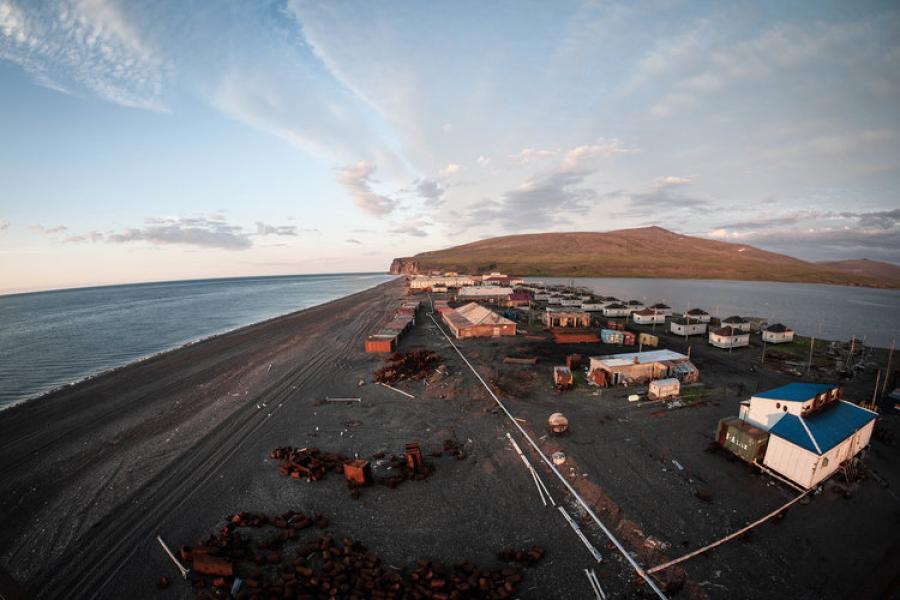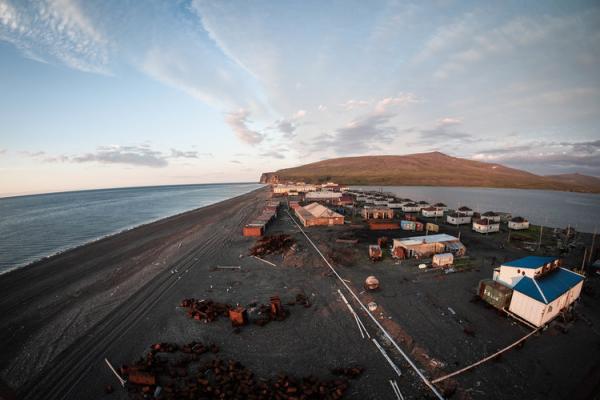Social Archaeology of an Imperial Shatter Zone
My current book project (Habilitation), Hunters and Traders in a Fluid World: A maritime anthropology of the Chukchi coast, is an attempt to draw a contemporary ethnography of Arctic sea mammal hunting communities along the Bering Strait coast in north-eastern Russia (Chukotka). The native coastal population of Chukotka was subjected to a twofold loss in the twentieth century: the large-scale, state induced and enforced closures of many native villages, the subsequent, resettlement of the population to centralized villages, and the following collapse of the Soviet economy and infrastructure.

Catastrophes leave ruins behind. Chukotka’s double catastrophe during the last century, the Soviet village relocations and the successive state collapse, left a scarred landscape in its wake, inhabited by the signs and debris of a failed attempt to create the smooth socio-economic space Soviet planners had so boldly envisioned. Dreams of technological and civilizational progress collide with the realities of socio-economic regress, revealing the intimate relation between utopia and catastrophe. Sudden collapses of civilizations genuinely question the narratives of a linear and teleological trajectory of progress and I follow here Walter Benjamin in seeing history as a continuous catastrophe, piling debris in its trajectory, while blindly propelling towards the future. This wreckage is a document of civilization, as well as of the unintended consequences of modernization.
The project focuses on the relationship between material culture, landscape and human behavior, exemplified through infrastructure. By analyzing technological evolution and devolution through shocks, seismic shifts, debris, fall-backs, and involution, this ethnography explicitly gives the materiality of technological transitions a central stage. I intend to capture the fleeting socio-economic shifts by analyzing access, infrastructural control, long-distance networks, and maritime commodity flows through a material lens, theoretically influenced by anthropological discussions of a new materiality and by literature from the emerging field of the archaeology of the contemporary past. In the sense of a social archaeology of an imperial shatter zone, embedded in a littoral landscape, this project outlines a potential inroad for a productive incorporation of archaeological methods and theories into contemporary anthropology.
Taking the 20thcentury history of forced village relocations in north-eastern Russia (Chukotka) as an example, the book explores the heuristic value of ruins as a mode of disclosure to come to a better understanding of structural violence and resistance at the margins of Empire. Prehistoric villages, abandoned border guard stations, blind lighthouses, former Soviet whale processing plants, and contemporary hunting camps are material crystallization points of memory along a coast gone lonesome, sedimentation traps where the debris of progress accumulates and folds onto itself. The methodological use of disruption, a critical application of material counter-narratives, and human-thing entanglements lie at the heart of this inquiry.
Researcher: Tobias Holzlehner


